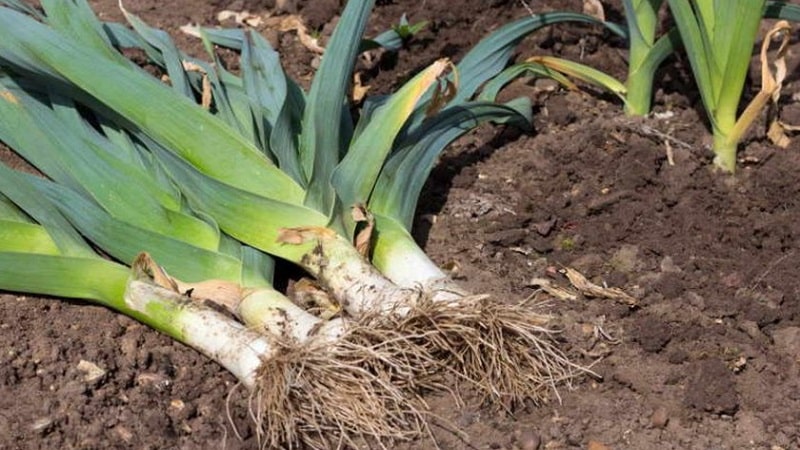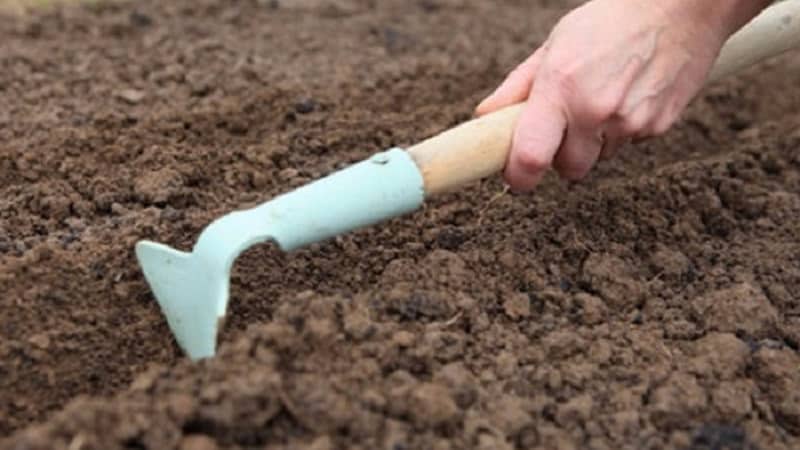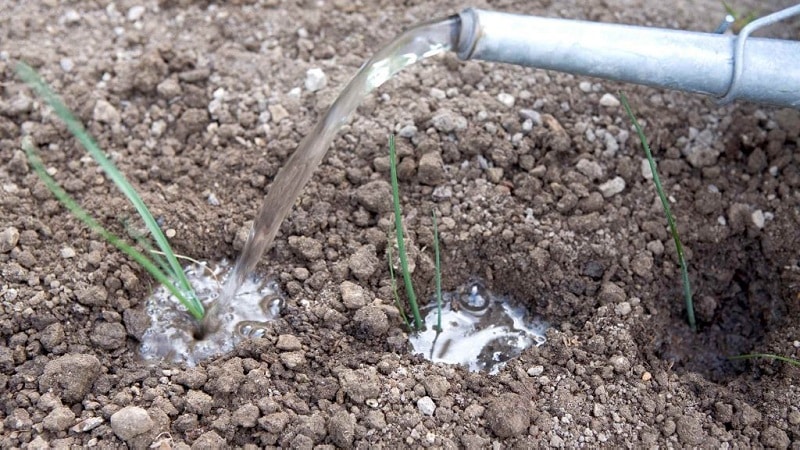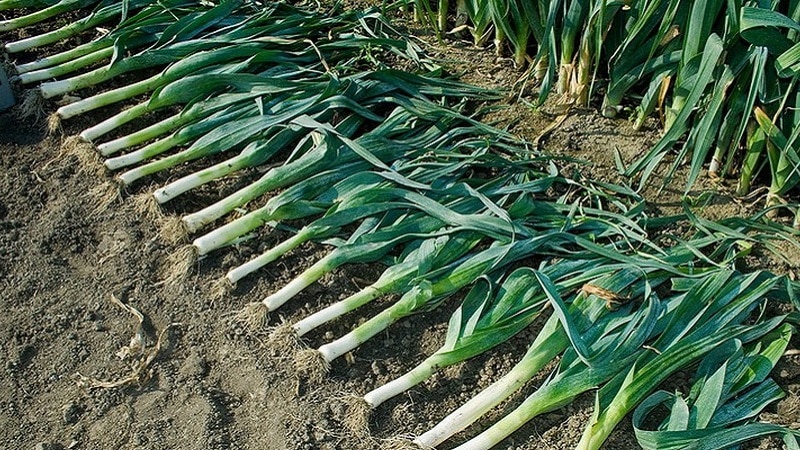Instructions for growing leeks: planting and care in open ground before winter
Leeks, or pearl onions, are a herbaceous plant native to Asia. The vegetable is distributed everywhere, including in Russia. The culture is unpretentious in care, cold-resistant. Let's consider what rules are followed when planting leeks in open ground before winter and how to properly care for the plant in autumn and early spring.
Is it possible to plant leeks before winter?
Many gardeners plant crops in late autumn. In cold and snowy winters, plants are hilled and insulated. If you follow all the recommendations, the harvest is harvested in May - June.
Interesting! It is known that leeks were grown in Ancient Egypt, Rome, and Greece. In the Middle Ages, the vegetable became popular in Europe, especially in France. Anatole France called pearl onions the poor man's asparagus.
Advantages and disadvantages
The main advantages of winter growing:
- early harvest;
- plants are resistant to onion fly: it attacks spring plantings, when winter onions are already strong enough;
- early ripening vegetables or herbs are planted in the vacant space;
- there is no need to weed the beds: when weeds begin to grow, the leek is already strong.

Main disadvantage — it is necessary to increase the planting rate, since under unfavorable winter conditions some of the plants die.
Suitable varieties
For winter sowing Late onion varieties are suitable, which ripen within 160–200 days.
The most popular among them:
- Good fellow;
- Elephant MS;
- Karantansky.
Landing dates
As a rule, winter onions are planted in November. Specific The dates are not tied to the calendar and depend on weather conditions, therefore, before sowing, monitor the forecast.
Attention! In regions with warm climates, the crop is also planted in December.
Favorable days according to the lunar calendar for sowing leeks:
- November: 1–3, 19-20;
- December: 1-2, 20, 25.
Suitable weather conditions
The air temperature should be within -1…+1°C. If it is warmer, the seeds will have time to germinate before frost sets in and the plants will die.
The culture loves humidity, so plant it in cloudy weather.
Crop rotation rules
The site for onions is chosen depending on what crops grew there before.
The best predecessors for leeks:
- cabbage;
- potato;
- pumpkin;
- legumes;
- greenery.
The vegetable will not grow well in the place where it was previously planted:
- cucumbers;
- garlic;
- corn;
- carrot;
- sunflower;
- various types of onions.
The crop is grown in the same place for no more than 2 years, in the future the plant is returned to the same bed after 4-5 years.
The most favorable neighbors for culture:
- tomato;
- celery;
- cabbage.
Preparation
To get a rich harvest correctly select and prepare a site for leeks, process planting material.

Soils
The soil is treated 2 months before planting the crop. It is fertilized with humus, compost, high peat (5–10 kg/m2), superphosphate (30–40 g/m2), wood ash (1-2 kg/m2). Funds are contributed for digging.
Planting material
Seeds are processed in stages:
- Calibrate: The grains are placed in a container of water for 15–20 minutes. Remove those specimens that float to the surface.
- Disinfect: seeds are wrapped in gauze, placed in a solution of potassium permanganate for 15–20 minutes, and then in a thermos with water at +45°C for several hours.
- Tempered: planting material is washed, dried and placed in the refrigerator for 12 hours.
The seeds are not soaked, but planted dry: early seedlings will lead to the death of the plantings.
Sowing technology
Leeks are planted according to this scheme:
- Grooves are made in the beds.
- Seeds are placed in them at a distance of 8–12 cm. The row spacing is 20 cm.
- Sprinkle everything with peat 1 cm thick.
- Watered.
- Cover with film or agrofibre.
- When the air temperature drops below -1°C, the leek is covered with dry leaves, straw or snow. The material is periodically added and removed in the spring, when the frosts have subsided.
Further care
To obtain a high yield, vegetables are fed 4 times per season.:
- 20 days after emergence, add 20 g of urea, 10 g of potassium sulfate, dissolved in 10 liters of water. Product consumption: 1 l/1 m².
- Every 3-4 weeks, use an aqueous solution of mullein or bird droppings (1:10) with wood ash.
Leek regularly watered (1-2 times a week), not allowing the soil to dry out. The schedule is adjusted depending on weather conditions.
Important! When the vegetable has formed a strong stem, the soil is mulched with hay, humus or peat to retain moisture.
The next day after watering, the soil is loosenedto avoid the appearance of a crust and improve access of moisture and oxygen to the roots.

Pest and disease control
The culture has strong immunity and with proper care, it is not susceptible to common diseases and pest attacks. With poor-quality seed treatment and thickening of plantings, there is a risk of downy mildew and rust.
For prevention seeds are disinfected, plants are treated with “Fitosporin” 2-3 times with an interval of 2-3 weeks.
To combat peronosporosis they use “Polycarbacin” (30 g per 10 liters of water) or “Arceride” (40 g per 10 liters of water). To make the preparations stick better to the plant, add a 1% soap solution. Working fluid consumption rate: 1 l per 10 m2. The treatment is repeated after 1.5–2 weeks.
Important! Onions after “Polycarbacin” are not used on green feathers.
Spraying is effective in the fight against rust. Bordeaux mixture (100 ml per 10 liters of water). The procedure is carried out no later than 20 days before harvest. Consumption: 1 l per 10 m2. Plants affected by rust are removed immediately.
The most dangerous pest for crops is onion fly. To prevent its appearance, the vegetable is sprayed with Iskra and Fitoverm. In April-May, the onions are covered with agrofibre.
Insecticides are used to control insects:
- "Thiamethoxam";
- "Imidacloprid";
- "Fly-eater."
Harvest and storage
Leeks are removed gradually. Vegetables that are planned to be consumed immediately are dug up as they ripen. Harvesting onions for storage is extended until August.

Vegetables are carefully dug up with a pitchfork, being careful not to damage the roots.. Leave them on the beds for about a day. Next, the roots are shortened by half, the leaves by ⅔.
Leeks can be stored in the cellar for 6-7 months. at a temperature of 0…+3°C, air humidity up to 85%. Vegetables are kept upright in wooden boxes with sand poured into the bottom.
Advice! In the freezer Leeks are stored 2 times longer.
Vegetables are kept on the balcony for 2-3 months, if the temperature does not drop below -5°C.
Conclusion
Leeks are great for winter growing. The main thing is to sow the seeds in time so that they do not sprout before the onset of frost.Waterlogged, sandy, clayey and acidic soil is not suitable for the culture. Plants are cared for in the same way as those planted in the spring, except that for the winter the plantings are covered with dry leaves, straw or snow.